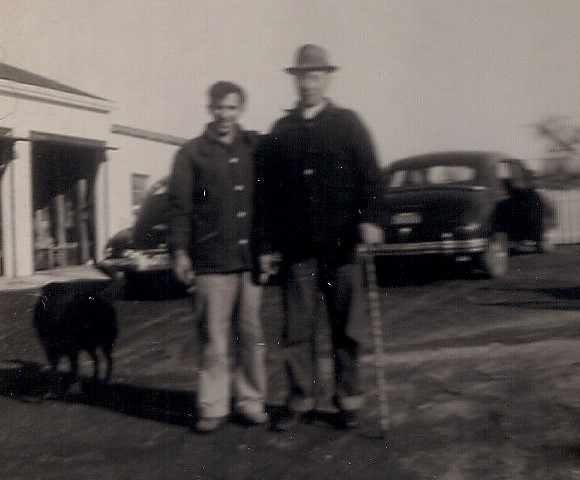
My dad, Alfred Carreiro (1918–2017), with his dad, José Carreiro (1880–1952). (c.1938)
This post is the second part of of a three–part tribute to my father.1 He lived for almost a century. A lot of living, experience and adventures fell to him. He had an amazing journey. I have tried to be as historically accurate as I can be in recalling his life. I have interspersed historical information within my narrative about him in this reflection. Any errors of fact are my fault. It is my hope that I have been able to recreate my father’s life in such a way as to share with readers the impact he had upon my life. He was the first storyteller I knew.
-
It was the year Teflon, the ballpoint pen and the photocopier were first introduced to Americans, and Du Pont announced a name for its new synthetic yarn—”nylon”.
Unfortunately, the photo above is blurry. While I was told on several occasions who took the picture, I do not now remember his or her name. I am not sure whether or not the inexperience of the photographer in taking pictures, the quality of the camera, and/or the aging of the photo on the film stock its embedded upon, have contributed to this sense of being out of focus. It was taken sometime in the year freeze dried coffee was introduced to the public, which was 1938. My father turned 20 years old on September 26th. The Great Depression had another year to fully run its course. The dog standing to my Dad’s right, could be his beloved Teddy. Vavu (grandfather) and my father are standing together on part of their driveway, situated in back of the main farmhouse where they lived. It is the only photo I have of them with one another.
To get a limited sense of the time he lived in then, I have listed below what some common items cost:
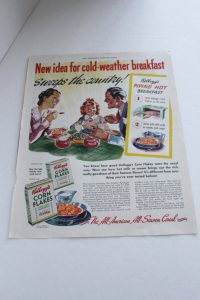
1930s Kellogg’s Corn Flakes advertisement (Pinterest).
• Average cost of a new house: $3,900.00.
• Average wages per year: $1,730.00.
• Cost of a gallon of gasoline: $0.10 | $0.99 = 10 gallons
• Average cost for house rent: $27.00 per month.
• A loaf of bread: $0.9
• Kellogg’s Corn Flakes: 3 packages for $0.25
• Average price for a new car: $763.00
• Minimum hourly rate: $0.25
Internationally, Germany began its persecution of the Jews under Adolph Hitler’s Nazi regime. On March 12th of that year, German troops invaded Austria. Absorbing
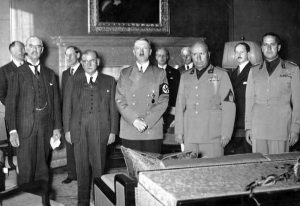
Front Row [left to right]: Neville Chamberlain, Édouard Daladier, Adolf Hitler, Benito Mussolini, Gian Galeazzo Ciano signed the Munich Agreement. (Photo in public domain: Bundesarchiv, Bild 183-R69173 / CC-BY-SA 3.0)
É
É
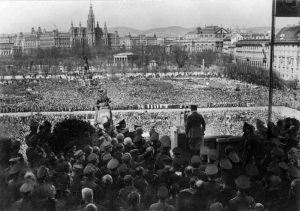
On Tuesday, March 15 , 1938, Hitler announces the annexation of Austria into Nazi Germany that occurred on Saturday, 12 March 1938 from the ramp of Vienna’s Hofburg Palace looking out at Hero’s Square. (German Federal Archives Allgemeiner Deutscher Nachrichtendienst – Zentralbild [Bild 183].)
Austria into Germany is called the Anschluss [German, from anschliessen, meaning “to join”]. Austria unreservedly welcomed becoming part of the German Reich. Germany’s laws and anti–Semitic acts were quickly applied to those of Austria.
Four days after Dad’s 20th birthday, the heads of state for Great Britain (Prime Minister Neville Chamberlain) and France (Prime Minister Édouard Daladier) acceded to Hitler’s demands to cede the Sudetenland to him. The Sudetenland comprised the border districts between Germany and Czechoslovakia of Bohemia, Moravia and parts of Czech Silesia, which had formerly been part of Austria until the end of World War One. They were populated mostly by ethnic German speakers. Desperate to avoid war and not experience the massive losses of The Great War, the Allies signed the Munich Agreement.2 The Czechoslovaks were never consulted and were forced to accept it.
When Chamberlain returned home, he told the British people that he had attained “peace with honor. I believe it is peace for our time.” His fellow countryman and erstwhile opponent, Winston Churchill, responded to Chamberlain’s statement saying,
“You were given the choice between war and dishonor. You chose dishonor and you will have war.”
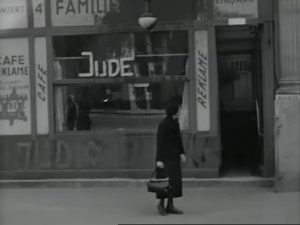
Home movie from Vienna likely taken just after Kristallnacht in 1938.
On November 9th, the Nazis committed the atrocity now known as Kristallnacht3 [“the night of the broken glass”], a two-day event occurring throughout Germany wherein Jewish synagogues were burned, Jewish shops were destroyed and Jews were killed at random.
- June 22nd | In front of 70,000 boxing fans at Yankee Stadium, Germany’s Max Schmeling was defeated by a knock out in the first round by the great Joe Louis for the heavyweight championship. It was called “The Battle of the Century”.
My father loved boxing. Some of my earliest experiences of him watching prize fights were filled with my amazement on observing him watch the boxing matches on TV. He literally disappeared into the fight. It were as if he were in the ring with the pugilists themselves. He would grunt from being hit, even move in his seat as though he were throwing, delivering and receiving punches. He would express anger at a perceived bad call by the referee and be completely immersed into the fight itself to the exclusion of what was around him in the room where he was watching the fight. He used to know Rocco Francis Marchegiano (1923–1969), who was popularly known as Rocky Marciano, and spoke of him with great admiration and respect. In the 49 fights “The Brocton Blockbuster” was in, he won all of them, with 43 of them being won by knocking out his opponents.
Please check out PBS' “The Fight”, a documentary focused on the iconic adversaries of America’s Joe Louis and Nazi Germany’s Max Schemeling.
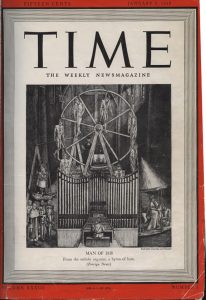
Time magazine’s “Man of 1938”.
When the January 2, 1939 issue of Time magazine was published,4 the featured man of the year was Adolf Hitler. Henry Luce, the founder of the publication, stated that Hitler was selected “for better or worse” as the individual who most influenced events in 1938.
• “Commercial quantities” of oil were discovered in Saudi Arabia by geologists and drillers of the Arabian American Oil Company [Aramco]. Aramco was a partnership between Standard Oil and Abdel Aziz,5 the first monarch of Saudi Arabia.
United States $1 Banknote, Legal Tender, Series of 1928 (Fr. Ref#1500). Part of the National Numismatic Collection, NMAH, Smithsonian Institution. Serial #1 of a printing of 1,872,012 notes. (The Bureau of Engraving and Printing & Smithsonian Institution. Image by Godot13.)
Regarding oil and its derivative products, Dad often would remark about how expensive everything cost today in comparison to his economic experience stretching back in time over ninety years. He would give examples, such as the price of gasoline. He would recall that when he was a boy one could buy 10 gallons of gasoline for $1.00.
• In the “Match of the Century”, the 1938 Match Race (Pimlico Special),6 Seabiscuit beat the favored War Admiral at the Pimlico Race Course on November 1st. Watching the race at the Baltimore, Maryland track were 40,000 fans, while forty million others listened to the race on radio.
Dad remembered listening to this race and being thrilled by Seabiscuit’s victory. He always rooted for the underdog.
On September 21st, with barely an acknowledged meteorological warning to the public at large, the Great New England Hurricane (aka the Long Island Express) struck New England.7 Dad was driving west along Route 6, an interstate road connecting Providence, Rhode Island to Fall River, New Bedford and Cape Cod. He had to abandon the truck he was driving just after he crossed the small bridge over Lees River in Swansea, which is currently located between the Somerset Creamery and the Venus de Milo Restaurant.
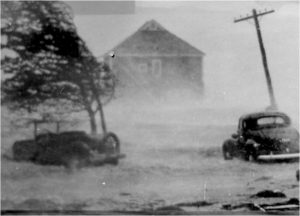
The Height of the 1938 Hurricane in Providence RI (photo Wm. H Foley Providence Journal). It was the greatest weather disaster to hit New England in its recorded history.
The Grand Army of the Republic Highway was now impassable due to severe flooding. Lees River drains into Mt. Hope Bay, which in turn is connected to Narragansett Bay and then the Atlantic Ocean.
The great power of the hurricane was able to collect a vast stretch of open ocean water and heave it into the tributary areas of the coast with impossible force behind it.
The flooding along this area of the highway was extensive. He saw a man stuck in the middle of the bridge. The driver of the vehicle was now on top of the roof of his car. Dad and four other men waded into the raging water. They formed a human chain and pulled the stranded man off to a safer spot on the road to the west of the bridge on the Swansea side of the river.
After getting his own car across the bridge, its engine then stalled out, and he could not bring it back to life. He had to walk three miles to his home during the storm. He thought that, at times, he was not going to make it due to the intense severity of the storm. The winds were shrieking all around him. As he carefully picked his way home over the roads he had to walk on, trees along Gardners Neck Road, Hortonville Road and then Locust Street were falling down all around him. Some were shredded apart with only pieces of their main trunks still standing in broken shapes. Many were being flung to the ground as by a giant hand, telephone poles and electric lines were on the ground as well. Lines sparked seemingly everywhere around him. He saw abandoned cars and trucks, but no one else was on the road with him.
“It was a miracle that I made it home in one piece.” He often said to me when recounting that moment in his life.
When he finally arrived home at the farm on Locust Street, he had witnessed unprecedented damage to the buildings and homes of his neighbors. Many trees were down in the main yard. The edge of the fields were littered with trees fallen onto crops about to be picked as well as being storm–draped over an extensive system of stone walls that had been rebuilt and repaired over the years by my grandfather. They lost almost everything still standing in the fields awaiting harvest.
Clean up of this disaster lasted well into the following spring.
- Some of the most popular movies of 1938 are listed below:8
- The Adventures of Robin Hood, featuring Errol Flynn, Olivia de Havilland, Claude Rains, Basil Rathbone and Ian Hunter;
- Boys Town, starring Spencer Tracy and Mickey Rooney;
- Jezebel, starring Bette Davis; and,
- Test Pilot with Clark Gable, Lionel Barrymore, Spencer Tracy and Myrna Loy
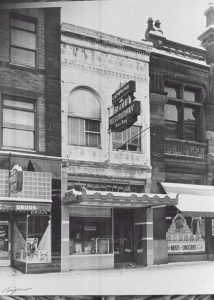
Bijou Theatre. (See Footnote for more information and attribution of this source.)

North Main Street in Fall River, Massachusetts c. 1928. The Bijou Theater is located on the left side of the street, towards the middle of the block pictured above. (Courtesy & permission of Shorpy.com.)
Americans still considered these movies as a remarkable invention, if not just examples of sheer magical wizardry of technology for that time. “Talkies” had only been out since 1927.
On Sundays and along with friends, Dad walked a bit over six miles to Fall River to watch movies at the 1,400 seat Bijou Theatre on 162 North Main Street.9
This theater was the second one in New England to be wired for sound. The first one is believed to have been The Majestic in Providence. Dad recalled initially paying ticket prices that were $.10.
- Kate Smith sings a rendition of Irvin Berlin’s “God Bless America” for the first time on radio during an Armistice Day broadcast.10
The price of a movie ticket went up as he grew older, but that happened when the new Durfee Theatre11 was built. A fire destroying the majority of the city’s business district occurred in 1928 when Dad turned ten. The Savoy Theatre was burned. The Durfee Theatre opened on August 31, 1929 and it was considered palatial by all. As the Bijou was eclipsed by the new theater, the Durfee became a premier spot for folks to be entertained.
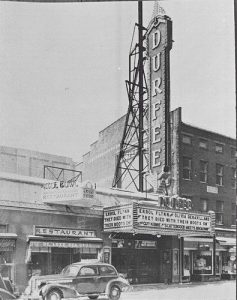
Durfee Theate marquee showing the 1941 movie They Died with Their Boots On, starring Errol Flynn & Olivia de Havilland (Flickr).
Dad saw Boys’ Town and Snow White and the Seven Dwarfs at the Durfee in 1938, which were two of the three biggest hits this theater ever showed. The other hit was The Sound of Music (1965), which ran for 37 weeks. I saw that movie there when I was in high school at the time it was released.
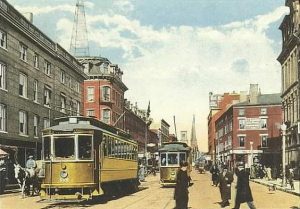
Trolleys on Fall River’s North Main Street (Pinterest).
In 1938, theater audiences could watch the current news, cartoons, trailers for upcoming movies, and a short film sandwiched in between the two main features all for the price of $0.25.
Prior to September 19, 1936, the trolley system for the city was still in operation. Dad would sometimes use the trolley, which cost five cents for a ride. On that day, it was motorman Al Menard who started Fall River’s final trolley run.12
Beginning at Steep Brook, he took the car to City Hall and switched driving the trolley with James H. Murphy. Murphy drove the car to its last stop at the Stafford Road barn.
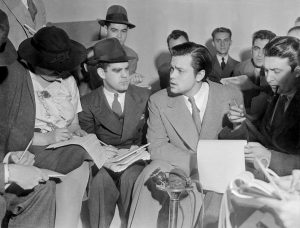
Photo of Orson Welles meeting with reporters in an effort to explain that no one connected with the War of the Worlds radio broadcast had any idea the show would cause panic.
- The golden age of radio13 was in full force and my father would listen to the radio to nationally popular shows, such as Abbott & Costello, Bob Hope, Dick Tracey, The Kraft Music Hall, Buck Rogers in the 25th Century, Burns & Allen, The Mercury Theatre on the Air, and Bennie Goodman.
On October 30th, Orson Welles’ radio program featuring “War of the Worlds” created much consternation nationwide when it aired. Welles presented the program more as a breaking feature news story than a play.14 Dad and his siblings grew quite alarmed when they heard it. My grandmother told them in Portuguese, Não o escute. Ele é somente uma mentira. In other words, “Don’t listen to it. It’s just a lie.”
- A brief list of popular songs of that year:
|
# |
Artist | Title | Year | Country |
| 1 | Artie Shaw | Begin the Beguine | 1938 | USA |
| 2 | Bob Hope & Shirley Ross | Thanks For the Memory | 1938 | USA |
| 3 | Seven Dwarfs | Whistle While You Work | 1938 | USA |
| 4 | The Andrews Sisters | Bei Mir Bist Du Schoen | 1938 | USA To Me You’re Beautiful |
| 5 | Fred Astaire | Nice Work If You Can Get It | 1938 | USA |
My father’s family loved music. It was an integral and inherent part of their being. While the older generation was devoted to Portuguese music, such as the Fado and improvisational singing in the form of cantigas ao desafio,15 the younger generation also avidly listened to the music of their time.
- Action Comics issued the first Superman comic, which is generally given the recognition for beginning the superhero genre. It is also considered to be the most highly priced comic book of all time: it was sold on eBay for $3,207,852.00 (USD) on August 24, 2014.16
I have included this bit of information about Superman because I began collecting comic books in the early 1950’s. Adult friends of the family gave me some of their copies that they had when they were children. I had early editions of not only Superman, but Batman, Captain Marvel and Archie. My collection grew sizeable enough that I kept them in two large paper grocery bags. I would haul them back and forth from my home to my grandparent’s farmhouse whenever I was there, which was often as my grandmother took care of me a lot while my parents worked. I frequently would stay overnight there, too. I was there so much that one time I decided to leave the paper bags at the farm. When I returned and went to look for the bags I could not find them. I became desperate to locate my comics. I looked everywhere in the three floors of the farmhouse, the main garage, the barn and even one of the chicken coops.
When my grandmother finally asked me what I was so frantically looking for, she told me, “Ah, eu o joguei fora.”
Hearing her brief explanation devastated me. She had thrown them out! This moment was the first time I had ever experienced such a combination of overwhelming feelings of loss, grief, despair, and melancholy. I remember crying unconsolably over this disaster. While I felt anger quickly rising withing me at my grandmother’s action, I also realized that she neither had any idea what she had just done to me nor the value about what she had thrown out.
Later that evening my father arrived to visit as well as to bring me home. When we got in the car to leave, he explained to me about my grandmother’s innocence even though she had thrown my comics away. He told me about the story of her doing the same thing with some of his clothes. She had thrown away one of his army uniforms. “We have something in common,” he said to me. “While we have someone who does not understand American ways, at the same time we have someone who loves us beyond our understanding.” Dad knew that the sting of the loss I felt wouldn’t go away, it still was lessened by the compassion that he helped share with me about my Vavo.
Regret for what was and could have been is a hard lesson to comprehend, especially for me to figure out at such a young age. It goes deep into the gut of one’s soul. The problem was that some of the comic books I had were first editions. Superman was one of them . . .
In a family replete with great storytellers, my father was able to help me grapple with a terrible situation. Unlike the lack of visual clarity in the photo at the head of this post, the memory of my father talking with me has provided me with an incredible legacy. It allows me to see not just the period of 1958, but to twenty years prior to that time, perhaps even a multitude of years stretching from Vavu’s, Dad’s and to my time simultaneously.
In sharing a loss that he experienced he told me a story of the pain he endured that was very similar to my own. He did not make it all go away, he just helped make it more endurable . . .
Footnotes & Related Links:
1For more information about my father’s side of the family, please see my 16 February 2016 weblog, “The Storytellers (Part I)”.
2Please refer to the following links for more information about the Munich Agreement:
https://www.britannica.com/event/Munich-Agreement
3Please refer to the links listed below:
http://www.history.com/topics/kristallnacht
http://www.jewishvirtuallibrary.org/background-and-overview-of-kristallnacht
4Please refer to the link below. It provides the article accompanying the feature story on Hitler:
http://www.scrapbookpages.com/DachauMemorial/TimeCover.html
“The cover picture featured Hitler playing ‘his hymn of hate in a desecrated cathedral while victims dangle on a St. Catherine’s wheel and the Nazi hierarchy looks on.’ This picture was drawn by Baron Rudolph Charles von Ripper, a German Catholic who had fled Hitler’s Germany.”
5The monarch was formally named Abdul Aziz bin Abdul Rahman ibn Faisal Al Saud. He was also referred to as Ibn Saud.
6Kindly refer to the links below:
https://worldhistoryproject.org/1938/11/1/seabiscuit-beats-war-admiral-in-the-match-of-the-century
7Kindly refer to the two links below for more information about this incredibly devastating storm:
http://www.weather.gov/box/1938hurricane
https://www.youtube.com/watch?v=7b21g-5YBLs
8For a more complete listing, please see the link below:
http://www.filmsite.org/1938.html
9More information on the Bijou Theatre can be found at the following links:
http://cinematreasures.org/theaters/12221
http://cinematreasures.org/theaters/12221/comments
10This broadcast can be listened to at the link below:
11Information about the Durfee Theatre can be found at the link shown below:
http://cinematreasures.org/theaters/6448/photos
12More information about the Fall River trolley system can be found at the link shown below. It is from an article in South Coast Today, written by William A. Moniz (Posted Jul 5, 2012 at 12:01 AM), Fall River Spirit Correspondent, “Horses, trolleys kept Fall River moving in early days”.
http://www.southcoasttoday.com/article/20120705/PUB03/207050389
13Some excellent sources of specific programs can be reviewed on the following links:
https://www.otrcat.com/p/bob-hope
https://archive.org/details/The_Bob_Hope_Program
https://www.otrcat.com/p/dick-tracy
https://www.otrcat.com/p/kraft-music-hall
https://archive.org/details/otr_abbottandcostello
http://www.oldradioworld.com/shows/Benny_Goodman.php
https://en.wikipedia.org/wiki/The_Mercury_Theatre_on_the_Air
https://en.wikipedia.org/wiki/Buck_Rogers_in_the_25th_Century_(radio_series)
14The episode of “War of the Worlds” can be heard at this link shown below:
A brief synopsis using video clips of the time can be seen at the following link:
15For more information about Fado and cantigas ao desafio, please see my February 4, 2016 blog listed below:
16You can read this first edition of Superman for free at the link below:
https://www.cgccomics.com/1134755001/#features/
Disclosure of Material Connection: Some of the links in the post above are “affiliate links.” This means if you click on the link and purchase the item, I will receive an affiliate commission. I am disclosing this in accordance with the Federal Trade Commission’s 16 CFR, Part 255: “Guides Concerning the Use of Endorsements and Testimonials in Advertising.”
© 3 June 2017 by A. Keith Carreiro
For information about my series, The Immortality Wars, please go to my home page: https://immortalitywars.com/


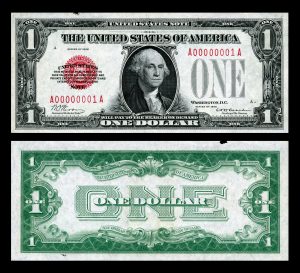
1 comment. Leave new
Amazing story Keith!!!